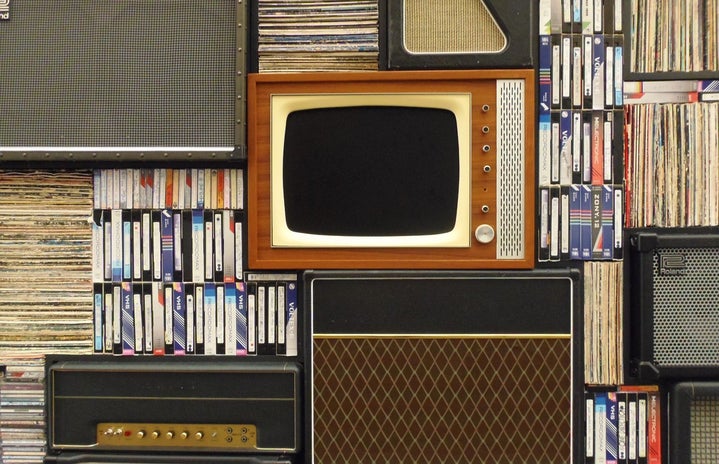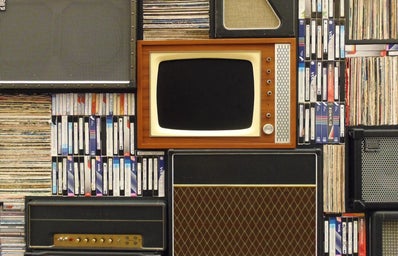The Enfield Poltergeist is a tale that many horror fans are familiar with. It has been the subject of countless shows, plays, and movies including The Conjuring 2. However, this documentary stands out amongst the rest for one simple reason: we hear the truth as it’s happening. There are spoilers below.
Okay, so I know that sounds a bit cryptic. But we all know the saying that goes: it’s her version, her version and the truth. Director Jerry Rothwell shows audiences the truth in a revolutionary way- he uses audiotape recording of the actual events, which is around 200-250 hours of audio recorded by Guy Playfair, one of the original investigators, for the series. No, I don’t mean he created the script from that. I’m referring to the fact that they used the original audio.
The actors’ mouths, and movements, such as the creaks of the furniture when people sit and the people’s breaths are entirely synced up to the recordings. I was blown away by the accuracy of it all. Rothwell explained the rehearsal and the impact the tapes had on the direction the series took. They only had about a week to rehearse and for many, it was the breaths that helped the actors create what Rothwell called fluency, to things. The audio also dictated a lot of the direction of what the audience saw, “It became kind of a technical exercise at times, you know, obviously, we had to be very planned, every recording had to be. We had to decide exactly what we were going to use, […] you’d realize suddenly that someone was in the room that you hadn’t thought about or, or maybe there was someone upstairs because you can hear like a voice upstairs or footsteps are going from one side of the room to the other. So that means the actor has to move.”
Everything being lined up so perfectly blew me away. There were times that I forgot the audio was pre-recorded from the 70s as even the smallest check of the floor was recorded and the actor then stepped accordingly. So, why did Rothwell decide to film it like this? The answer for him was an easy one. “We wanted to show the way in which these events escalated their impact on the family. So that guided our choice[s]”
But like in everyday life, not everything was recorded, which is where members from the Hodgens family come in. We mostly saw the oldest sister, Margaret, and Janet, the focus of the activity had come on camera to discuss what had occurred. It wasn’t necessarily an easy task, “They’ve been on the whole reluctance to talk about it, partly because I think there’s a feeling that they’ll either be kind of ridiculed, the subject of a kind of fascination that they don’t want to be the subject of and so I think they were initially reluctant.” He continued about how he made sure to ensure it would be respectful, “We’ve worked with Janet for a long time, trying to reassure her that, you know, we will be honoring her experience and kind of really trying to look at what happened.”
Rothwell did an amazing job with that as well. You could see and understand the pain that not only the family went through, but what Janet went through as she was taken from her home and lived in multiple places, something no other film or documentary that I’ve been able to access has ever addressed. It isn’t a simple case of coming into an exorcism and everything is okay like the movies and shows want us to believe. This was something that occurred regularly and Rothwell did an amazing job of keeping humanity in the documentary; it contained a lot of compassion and empathy, showing what really happened in these people’s lives.
Using the tapes, I believe is the most accurate detection of what went on simply because we are hearing exactly what is going on from the tapes themselves. When asked if this will be the new way documentaries are filmed, Rothwell said, “The form of a documentary always comes from what the source material is. As you start working on the source material, certain ways of approaching that material seem right for it, and certain [materials] don’t. For me, it was less about trying to reconstruct something; but more I was really interested in her in making this series where the sound is authentic, recorded contemporaneously recorded sound, and the picture is an interpretation of what that sets up for an audience; there’s still moments when you watch the series where you completely forget that it’s archival. And then some moments that snap you back into that.”
There are moments where you do forget its archived footage and through the camera movements, he expertly reminds the audience, in a different way in each episode, that this is still filmed on a soundstage. This documentary is more than just for horror fans. This series goes beyond what any other show, series, or movie previously made has done. Does it have elements of horror? Yes. But, this documentary isn’t just for horror fans- I believe if you’re interested in the human experience or even the future of documentaries themselves, you should watch this series. Just make sure you have time set aside because believe me when I say once you watch one episode, you can’t stop until you’ve seen all four- I couldn’t. All four episodes are available on Apple TV.

